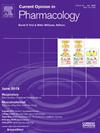Biased signalling in analgesic research and development
IF 4.2
3区 医学
Q1 PHARMACOLOGY & PHARMACY
引用次数: 0
Abstract
Ligand bias offers a novel means to improve the therapeutic profile of drugs. With regard to G protein-coupled receptors involved in analgesia, it could be advantageous to develop such drugs if the analgesic effect is mediated by a different cellular signalling pathway than the adverse effects associated with the drug. Whilst this has been explored over a number of years for the μ receptor, it remains unclear whether this approach offers significant benefit for the treatment of pain. Nevertheless, the development of biased ligands at other G protein-coupled receptors in the CNS does offer some promise for the development of novel analgesic drugs in the future. Here we summarise and discuss the recent evidence to support this.
镇痛药研发中的偏差信号。
配体偏倚为改善药物的治疗效果提供了一种新方法。就参与镇痛的 G 蛋白偶联受体而言,如果镇痛效果是由不同的细胞信号途径介导的,而不是由与药物相关的不良反应介导的,那么开发此类药物就会很有优势。多年来,人们一直在探索如何治疗μ受体,但目前仍不清楚这种方法是否能为疼痛治疗带来显著益处。不过,中枢神经系统中其他 G 蛋白偶联受体的偏性配体的开发确实为未来新型镇痛药物的开发提供了一些希望。在此,我们总结并讨论了支持这一观点的最新证据。
本文章由计算机程序翻译,如有差异,请以英文原文为准。
求助全文
约1分钟内获得全文
求助全文
来源期刊
CiteScore
8.80
自引率
2.50%
发文量
131
审稿时长
4-8 weeks
期刊介绍:
Current Opinion in Pharmacology (COPHAR) publishes authoritative, comprehensive, and systematic reviews. COPHAR helps specialists keep up to date with a clear and readable synthesis on current advances in pharmacology and drug discovery. Expert authors annotate the most interesting papers from the expanding volume of information published today, saving valuable time and giving the reader insight on areas of importance.

 求助内容:
求助内容: 应助结果提醒方式:
应助结果提醒方式:


